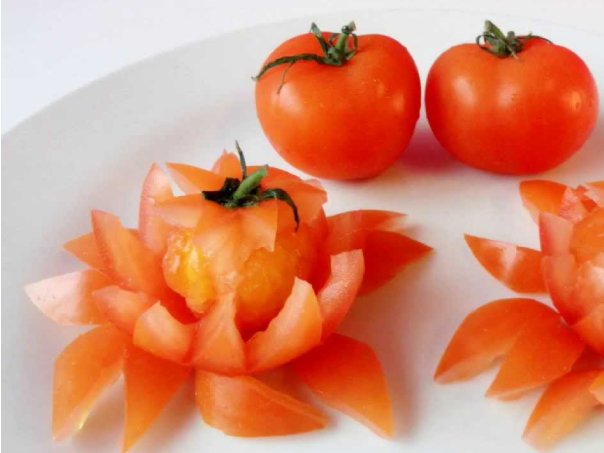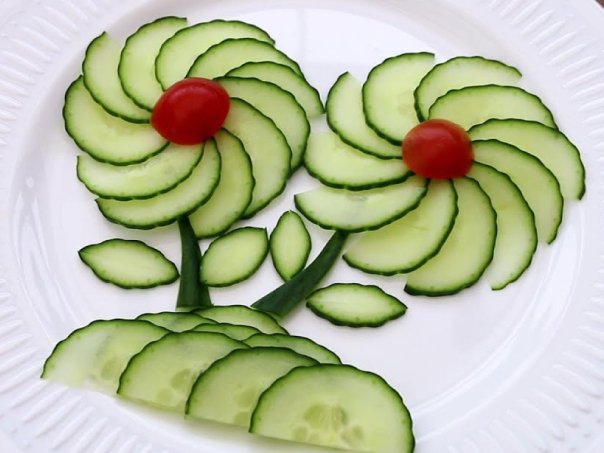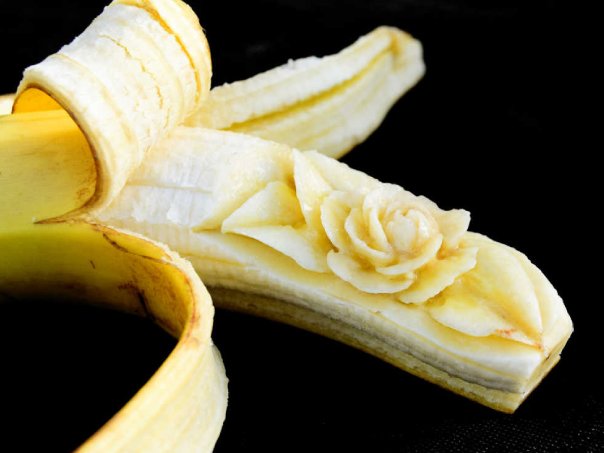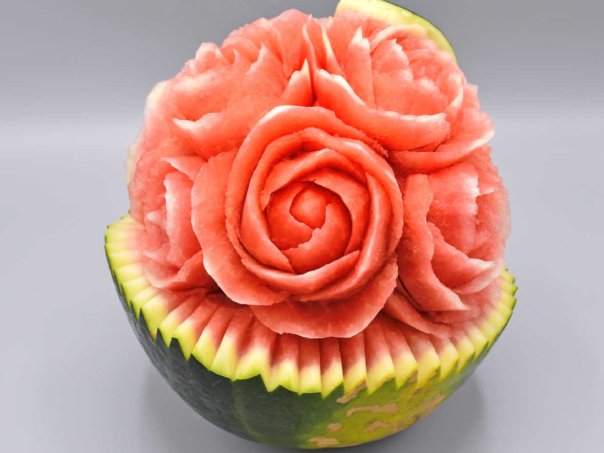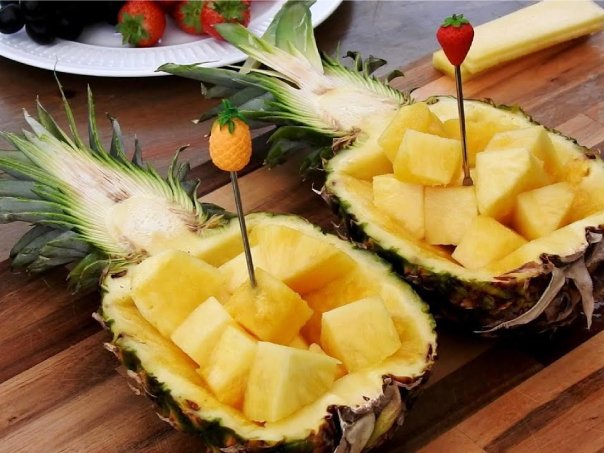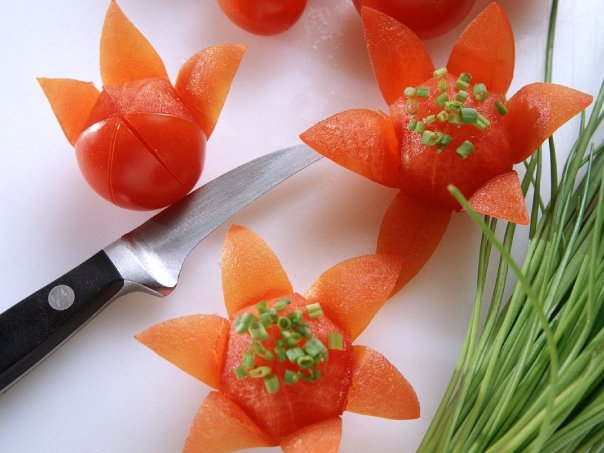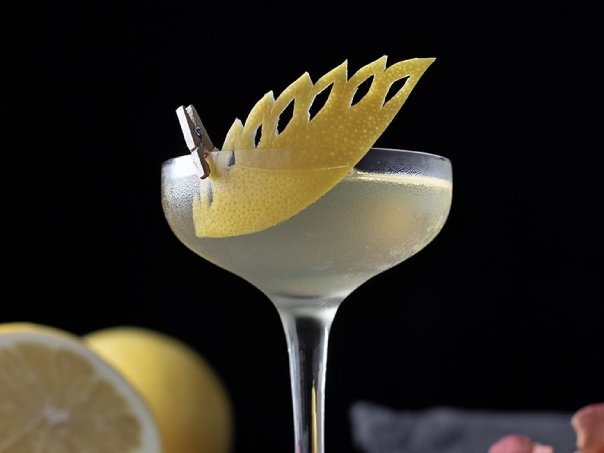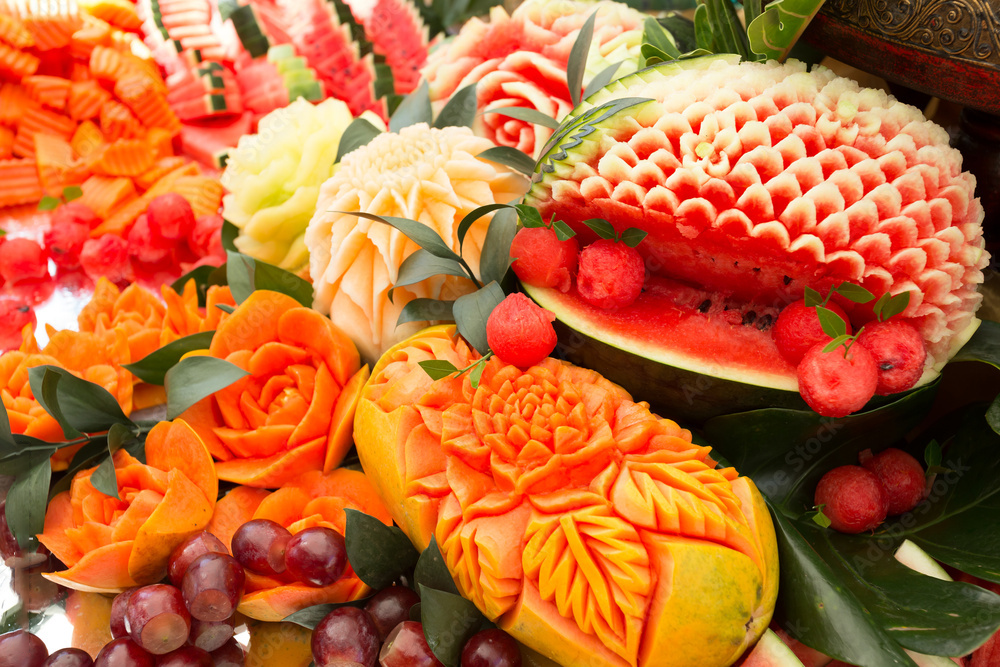Carving of fruits and vegetables
The carving of fruits and vegetables is an oriental technique called Mukimono. The purpose of this technique is to get the vegetables to obtain the shape of flowers. To proceed with the carving, we will need special tools. Very thin and very precise knives are used, these are available in gastronomic bazaars.
In addition to carving flower shapes, it is possible to represent leaves, landscapes, animals, and even ideogram messages. The aim of this technique is not only to highlight shapes and colors but also to emphasize aromas and flavors.
It is necessary to have practice with the carving elements, so do not be discouraged if you do not succeed from the beginning. Like everything in life, it requires time and dedication. And if you want to try more daring designs, it is good to have some "artistic" ability.
How can you start carving? Here are some examples of sweet and savory foods.
-In savory dishes, we can work with:
-Tomatoes (cut in quarters, halves, or slices).
-Bell peppers (cut into strips or clean inside and cut into thin slices that will remain as rings)
-Cucumbers (cut into slices)
-Pumpkin (it can be carved as a basket and used as a bowl in an appetizer table).
For sweet dishes, we can work with:
-Pineapple (the lower half of the whole fruit is preserved and the upper half has the peel or part of it removed and the pulp carved or shaped).
-Watermelons (worked in the same way as pineapple)
-Oranges, grapefruit, or lemons (cut into slices, wedges, or halves)
-Slices of lemon or orange to decorate ice cream, iced glasses, or cold drinks.
-Cherries and cherries can also be used to decorate desserts.
-Grapes, on the edges of plates or centerpieces.
-Bananas (sliced, whole, or just making shapes with their peel).
Look how beautifully you can decorate a sweet table with oranges or any other citrus fruit.
How to decorate an orange lime or other citrus fruits in this way? Let's look at the master class.
1. Buy oranges, grapefruit, limes with beautiful hard skins.
2. Take paper tape and wrap the fruit. Then you can draw even parallel lines for the pattern.
3. Use a felt-tip pen to apply a pattern.
4. Using carving knives, make cuts in the peel so that only the top colored part of the peel is removed. In this case, the white layer will contrast with the rest of the background.
5. Now you must treat the surface with a slice or lemon juice. This is necessary so that the incisions do not turn black.
6. Immerse the patterned fruit in a bowl of cold water for a short time.
7. Now leave it for a few days in a well-ventilated area.
That's it. Thus, processed citrus can retain their beauty for quite a long time.
Do you dare to try it?



